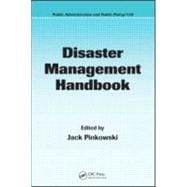
Note: Supplemental materials are not guaranteed with Rental or Used book purchases.
Purchase Benefits
What is included with this book?
| Preface | p. xv |
| Introduction | p. xix |
| Editor | p. xxv |
| Contributors | p. xxvii |
| Introduction, Theoretical Constructs, and Conceptual Foundations | |
| Coastal Development and Disaster Preparedness: The Delusion of Preparedness in Face of Overwhelming Forces | p. 3 |
| Rising Disasters and Their Reversal: An Identification of Vulnerability and Ways to Reduce It | p. 19 |
| The Politics of Disaster Management: The Evolution of the Federal Emergency Management Agency | p. 37 |
| Katrina and Her Waves: Presidential Leadership and Disaster Management in an Intergovernmental Context | p. 51 |
| The Role of Coordination in Disaster Management | p. 75 |
| Case Studies and Lessons Learned: U.S. Natural and Environmental Disasters | |
| A Different Approach to Disaster Recovery: Alaskan Earthquake Disaster Recovery | p. 101 |
| Hurricane Hugo: Two States' Responses to the Disaster | p. 115 |
| Hurricanes Katrina and Rita: The Critical Role of the Nonprofit Community in the San Antonio Disaster Response | p. 123 |
| Small Town Disaster Management: Lessons Learned from Katrina in Mississippi | p. 157 |
| Emergency Contracting for Hurricane Katrina in New Orleans Gulf Area | p. 171 |
| Debris Disposal and Recycling for the Cedar and Paradise Wildfires in San Diego | p. 185 |
| Case Studies and Lessons Learned: International Disasters | |
| Disaster in the United States and Canada: The Case of the Red River | p. 245 |
| Variability of Natural Hazard Risk in the European Alps: Evidence from Damage Potential Exposed to Snow Avalanches | p. 267 |
| Disaster Management Structure in Turkey: Away from a Reactive and Paternalistic Approach? | p. 281 |
| HIV/AIDS in Africa: Botswana's Response to the Pandemic | p. 321 |
| Toward Disaster Resilient Communities: A New Approach for South Asia and Africa | p. 337 |
| First Response and Emergency Management | |
| National Incident Management System: Bringing Order to Chaos | p. 357 |
| Hospital Emergency Preparedness | p. 369 |
| Media Relations and External Communications during a Disaster | p. 387 |
| Responding to Natural Disasters: An Increased Military Response and Its Impact on Public Policy Administration | p. 401 |
| Military Involvement in Disaster Response | p. 415 |
| Human, Personal, and Interpersonal Issues | |
| Disaster Management and Populations with Special Needs | p. 427 |
| Disaster Psychology: A Dual Perspective | p. 445 |
| Managing the Spontaneous Volunteer | p. 459 |
| First Responders and Workforce Protection | p. 471 |
| Disaster Rehabilitation: Towards a New Perspective | p. 477 |
| The Half-Full Glass: How a Community Can Successfully Come Back Better and Stronger Post-Disaster? | p. 493 |
| Planning, Prevention, and Preparedness | |
| The Role of Training in Disaster Management: The Case of Hawaii | p. 529 |
| Disaster Management and Intergovernmental Relations | p. 553 |
| Issues in Hospital Preparedness | p. 561 |
| Strategic Planning for Emergency Managers | p. 571 |
| Index | p. 583 |
| Table of Contents provided by Ingram. All Rights Reserved. |
The New copy of this book will include any supplemental materials advertised. Please check the title of the book to determine if it should include any access cards, study guides, lab manuals, CDs, etc.
The Used, Rental and eBook copies of this book are not guaranteed to include any supplemental materials. Typically, only the book itself is included. This is true even if the title states it includes any access cards, study guides, lab manuals, CDs, etc.